How to Choose the Perfect Carat Weight
February 20th, 2018 / Alese Oldenburg
When is one carat more than one carat? The stone shape and cut can have a big impact on whether a stone looks true to its carat weight. From classic Round to funky Trillion, each cut shows its size differently. It may maximize the carat weight and appear quite large, or it may have qualities that make it look a bit smaller.
Read on to see how each shape interacts with the carat weight, and then compare one carat side by side.
COMPARE BY CUT
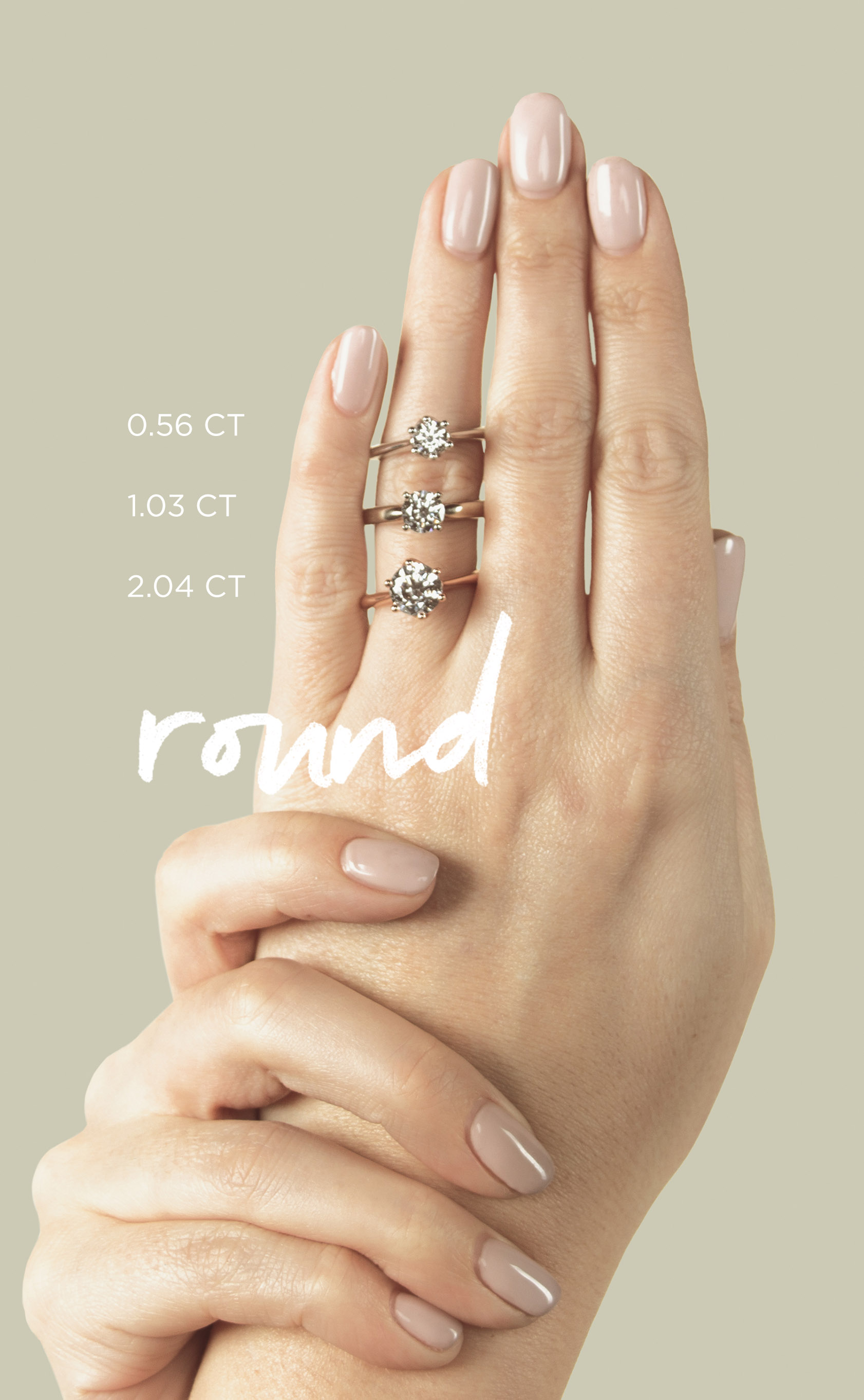
The Round Brilliant cut is the most popular shape, and it’s known for being very sparkly due to the many facets that refract light. The round engagement ring shape is very traditional and appears true to its carat weight.
Notice how the setting can change the character of a ring. With six prongs, shown at the top and bottom, the prongs become a more noticeable part of the ring design. For larger carat weights, or if you are hard on your hands, a six-prong design will be sturdier.
Pictured: 0.56 carat Bali | 1.03 carat Tapered Classic Solitaire | 2.04 carat Bali
The cushion cut engagement ring is a mix between a round and square shape, with four rounded corners and lots of internal facets to make it shine. This style maximizes carat weight and makes the stone looks larger, so a 1 carat cushion cut stone will appear larger than a 1 carat Round or Princess cut.
The rounded edges create the illusion that the stone is larger than it is, because it is neither a circle nor a square. In addition, the way the facets are actually cut into a cushion cut stone actually makes it appear larger when viewed from the top.
Pictured: 0.56 carat Tapered Classic Solitaire | 1.03 carat Angelix | 2.04 carat Fiji


The square shape of a Princess cut has straight, symmetrical lines and brilliant facets. Like the Round cut, the symmetry of this shape is fairly true to carat weight and has a contemporary look.
With Princess cut stones, the prongs are often v-prongs, which clasp the sharp corners of the stone. This style protects the vulnerable corners, but you can also find sturdy straight prong or claw prong settings that change the look of the ring overall.
Pictured: 0.56 carat Fiji | 0.99 carat Tapered Classic Solitaire | 2.01 carat Montreal
The rounded shape of the Oval cut elongates the fingers and looks very elegant. It’s an increasingly trendy shape that still has a timeless quality. It sparkles like the Round Brilliant cut, but the elongated shape maximizes carat weight so the stone appears larger.
The Oval shape has a larger surface area and a shallower depth of the cut, which are factors that also contribute to this cut appearing larger. Typically, a four-prong setting showcases an Oval stone best, but a six-prong setting can be gorgeous too, particularly for larger carat weights.
Pictured: 0.43 carat Montreal | 0.98 carat Bali | 1.86 carat Tapered Classic Solitaire
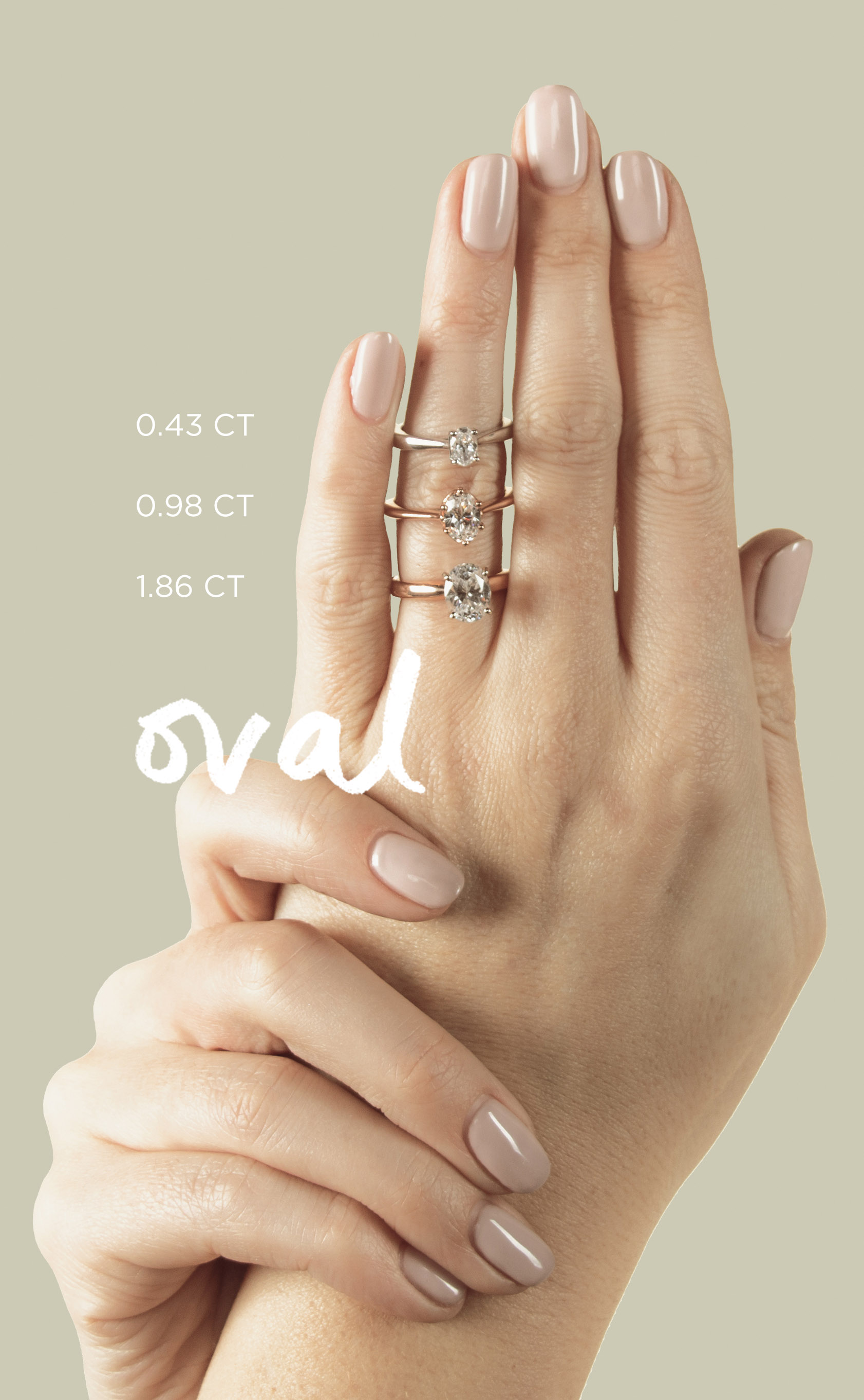

The Emerald cut ring is a unique style because it has very few facets. The open step-cut facets refract light differently, creating a flashing effect rather than a more traditional sparkle. It’s a vintage, elegant look that appears slightly larger than its true carat weight.
The way the facets are cut into an Emerald cut stone give it a larger surface area than a Round cut stone, which makes it look larger. To make the most of the bigger look, go for a simple setting that lets the main stone shine.
Pictured: 0.66 carat Angelix | 1.06 carat Tapered Classic Solitaire | 1.74 carat Montreal
The rectangular shape and brilliant-cut facets make the Radiant cut feel modern and bold. The elongated shape and intense sparkle make Radiant cut stones appear larger than their carat weight suggests, so a 1 carat stone looks larger than a similar weight in another cut.
In fact, the creator of the Radiant cut, Henry Grossbard, specifically designed them to appear larger than other carat weights. He was able to cut the facets differently than other stones to create a cut that is exceptionally sparkly and yet shallower so the eye sees more surface area.
Pictured: 0.60 carat Montreal | 1.14 carat Tapered Classic Solitaire | 1.74 carat Verona
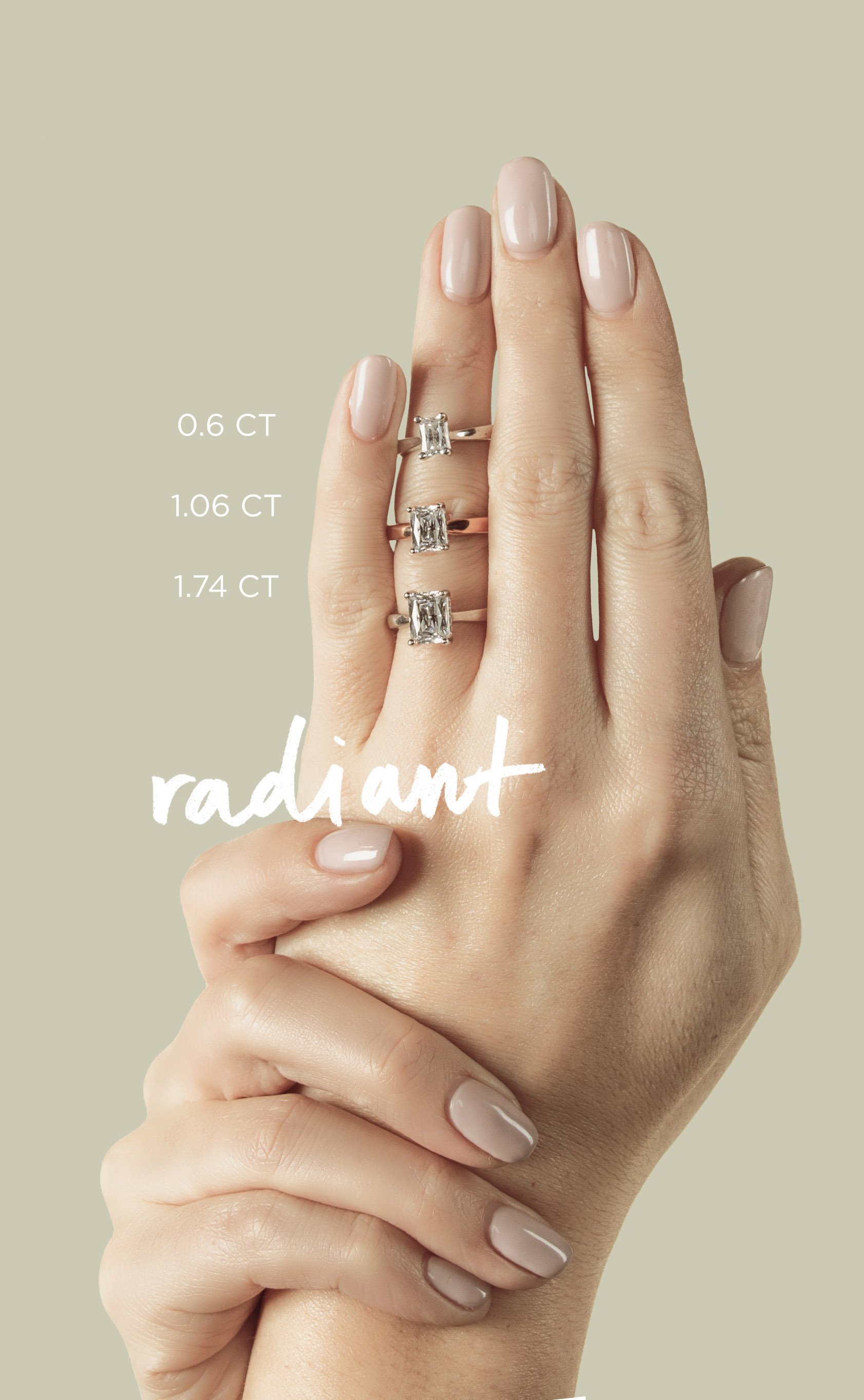
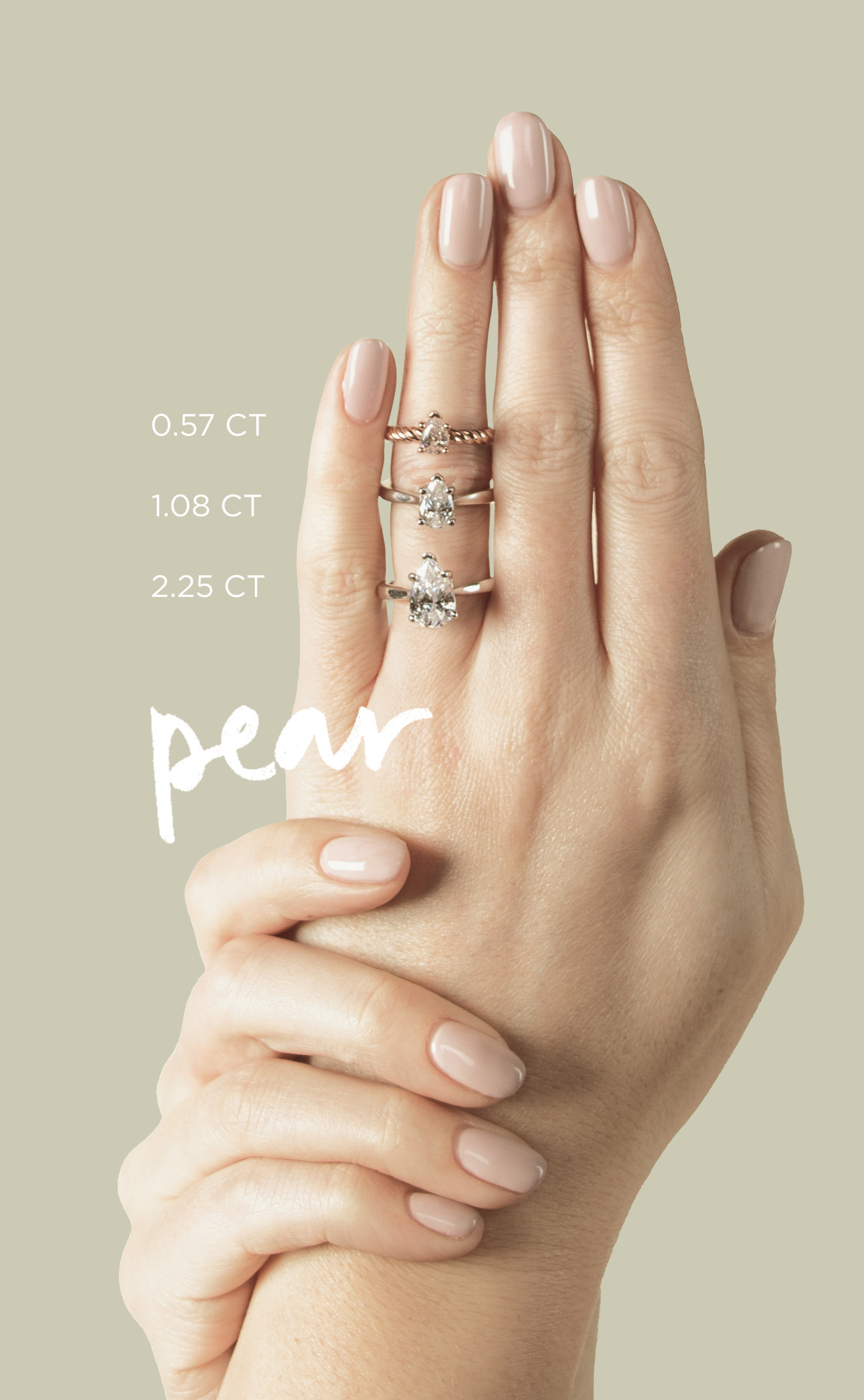
The trendy Pear cut has a teardrop shape and lots of brilliance. The oblong, asymmetrical shape makes fingers look longer and slimmer, and also maximizes carat weight so the stone looks larger, particularly at higher carat weights that showcase the unusual silhouette.
The combination of the Round and Marquise cuts gives the best of both worlds. The rounded bottom has maximum sparkle and visual weight, while the pointed top elongates the stone and creates more surface area, which makes it look larger overall.
Pictured: 0.57 carat Fiji | 1.08 carat Montreal | 2.25 carat Montreal
This vintage-style cut is coming into popularity with fashion-forward brides. The open step-cut facets are similar to the Emerald cut, and they draw the eye deep into the heart of the stone.
The way the facets are cut in this shape means the stone carries more weight internally, rather than spread out along the top surface. This style can actually appear slightly smaller than the carat weight, so go bigger if you want to highlight the uniquely mesmerizing shimmer.
Pictured: 0.56 carat Montreal | 0.99 carat Tapered Classic Solitaire | 1.96 carat Tapered Classic Solitaire
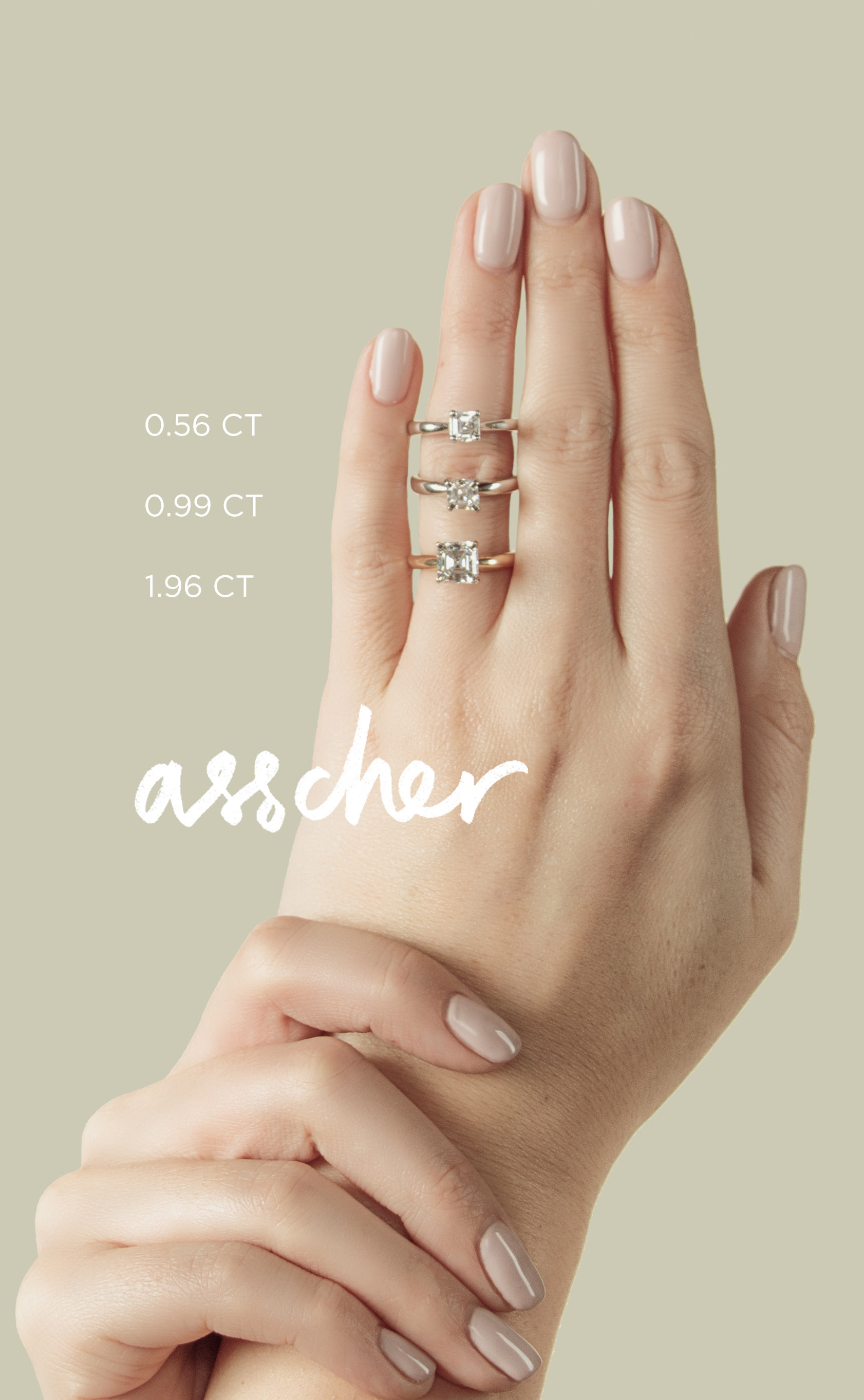

The Marquise cut is associated with royalty and has a cool vintage feel. The pointed ends and graceful curve is flattering on longer fingers.
Because it is so long and narrow, it can maximize carat weight and appear quite large. This cut is quite long and shallowly cut, which maximizes the surface area that the eye sees when it is set in the engagement ring. However, because it is narrower, it doesn’t always look as large as some of the other fancy cuts.
Pictured: 0.71 carat Tapered Classic Solitaire | 0.95 carat Montreal | 2.11 carat Montreal
This funky, modern cut is triangle shaped with rounded edges, which make the most of the carat weight. If you want a unique statement, the Trillion cut is a stunning choice.
A 1 carat stone appears quite large compared to similar sizes in other cuts. The surface area of the Trillion cut is quite large, and the rounded edges create the illusion of an even larger stone. Stick to a simpler setting to let the unusual shape of this cut shine.
Pictured: 0.55 carat Bali | 1.10 carat Bali | 1.92 carat East-West
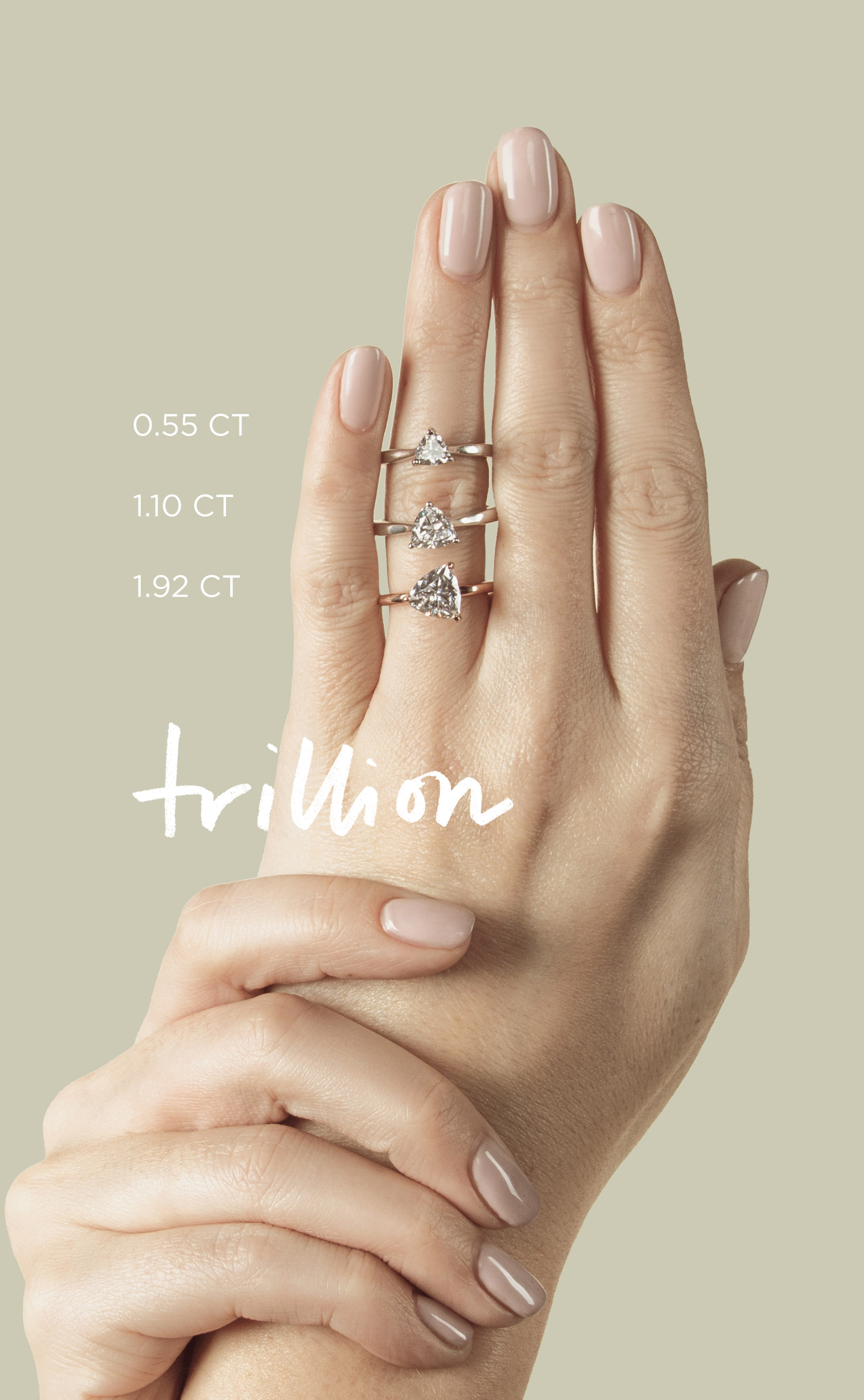
COMPARE ONE CARAT
See one carat in each cut, side by side.

Pictured: Pear, Emerald, Round Brilliant
Notice how the Pear cut stone looks the largest due to its rounded edges and tapered point. The Emerald cut looks slightly larger than the Round Brilliant, but because it has fewer facets and straight, clean lines, it appears truer to one carat.
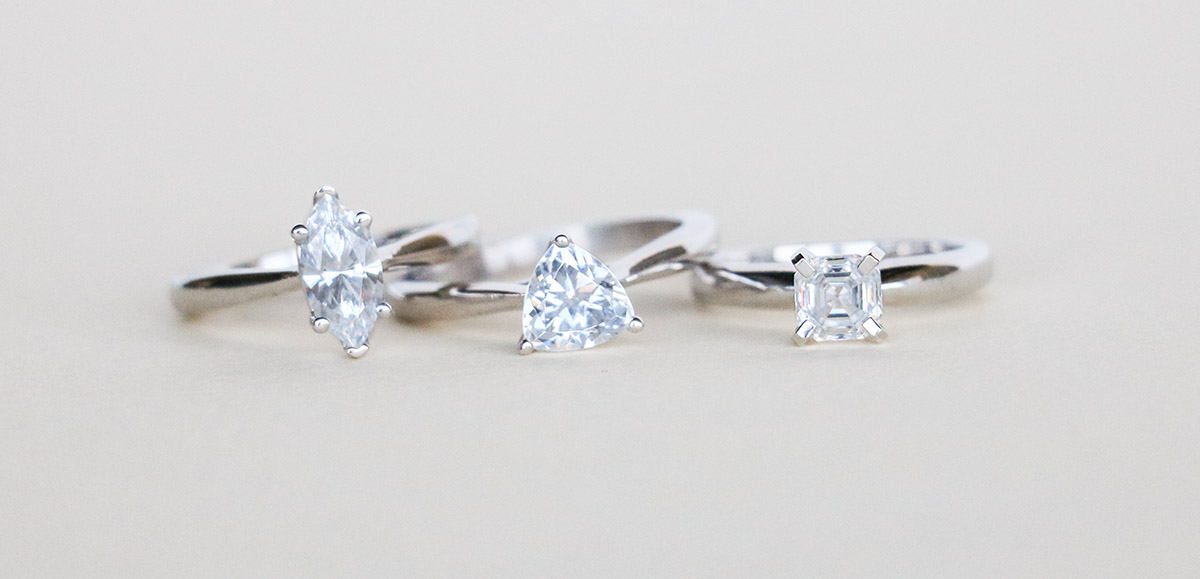
Pictured: Marquise, Trillion, Asscher
Observe how the height of the Marquise cut looks quite large compared to the other two stones. The Trillion cut looks larger, as well, due to its rounded edges. The Asscher, with its step-cut facets, looks the smallest of the bunch, but its mesmerizing depth draws the eye.
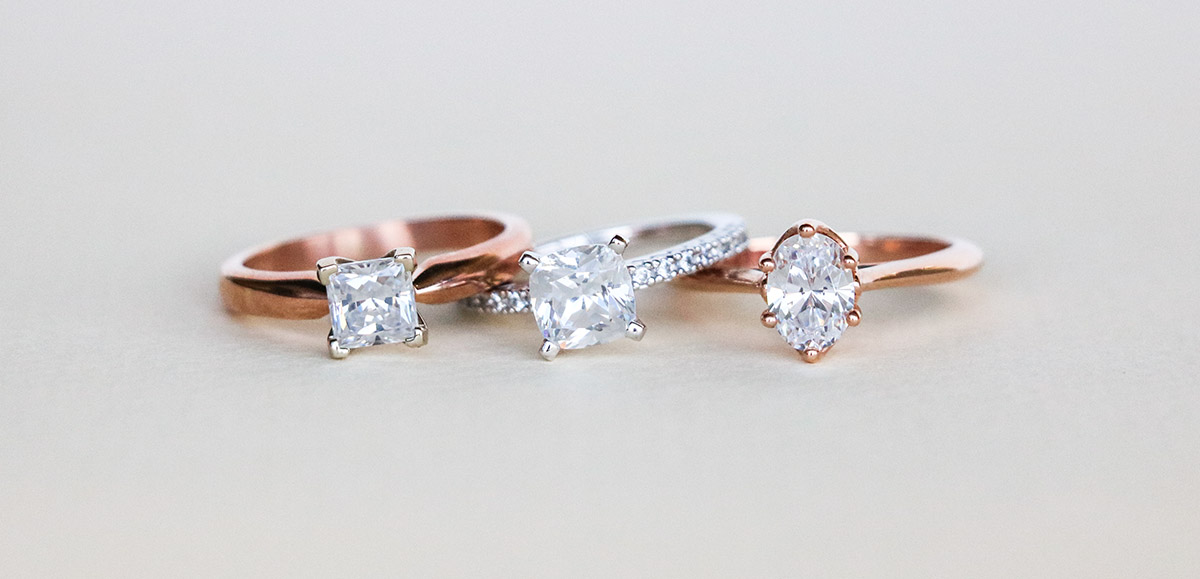
Pictured: Princess, Cushion, Oval
The Princess cut looks quite true to its one-carat size. Notice how the rounded corners of the Cushion cut make it appear quite a bit larger than the similarly-sized Princess cut. The Oval cut also looks larger than the Princess cut, because of its oblong, rounded shape.
Which stone cut and carat weight would you choose?

